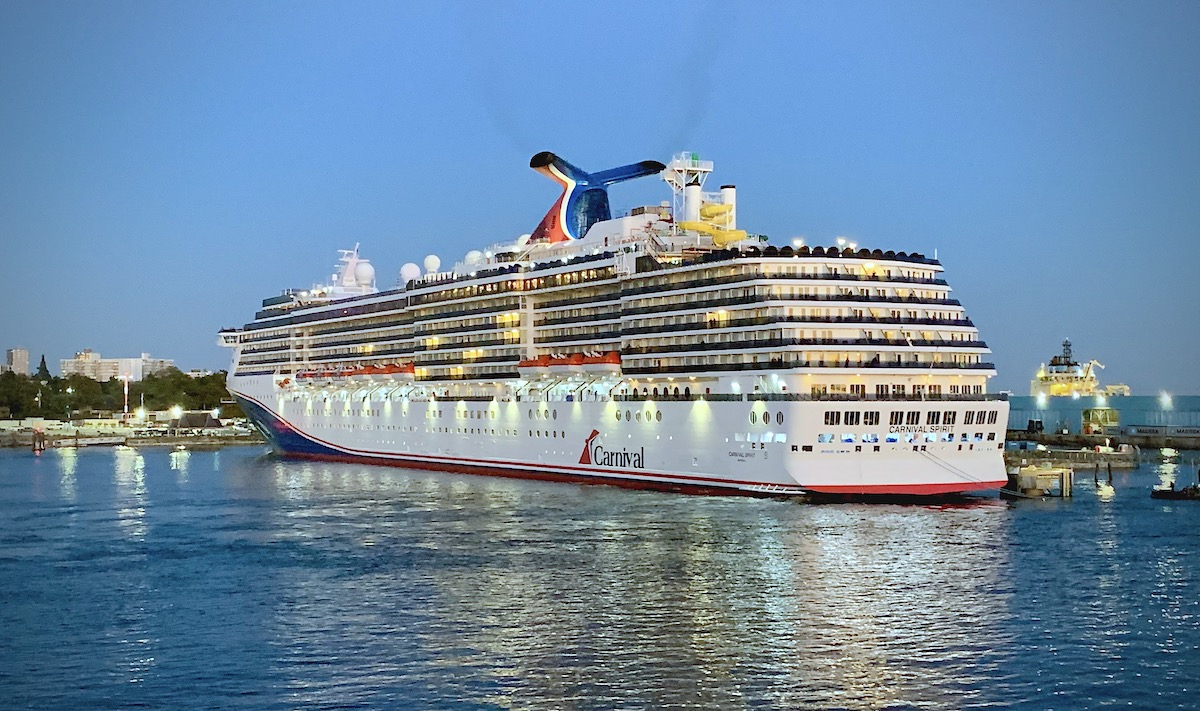Support strong Canadian climate journalism for 2025
Cruise ships are jeopardizing endangered southern resident killer whales by dumping billions of litres of polluted wastewater into the ocean, new federal government documents reveal.
There was a 14-fold increase in the total number of ships employing scrubber technology in coastal waters between 2018 and 2022, recent data submitted by Environment and Climate Change Canada (ECCC) to an international environment organization revealed.
In 2022 alone, a total of 466 ships with scrubbers discharged more than 88 million tonnes of acidic wastewater loaded with heavy metals and other pollutants along the West Coast, according to ECCC estimates. Many of those pollutants include toxic contaminants listed as one of the top concerns in recovery plans for the 74 remaining endangered southern resident killer whales, said Anna Barford, shipping campaigner for Stand.earth Canada.
The new details on scrubber pollution came to light in the ECCC response document after Stand.earth filed a complaint to the Commission for Environmental Cooperation (CEC), an international forum through which Canada, the U.S. and Mexico address shared environmental concerns.
Stand.earth’s complaint alleges Canada is failing to enforce existing laws, especially under the Fisheries Act, to prevent scrubber pollution from cruise ships and other vessels from harming the marine environment, Barford said.
“There’s no longer any plausible deniability from Canada that scrubbers are not harmful, or that scrubbers discharges should be allowed,” she said.
“We know now we need to be doing better for whales and for our communities.”
Scrubbers are exhaust-cleaning technology that draws fresh seawater to “wash” regulated pollutants, such as sulfur dioxide and other carcinogens and toxic metals, from a ship’s exhaust. That water is then flushed into the ocean.
The devices are a loophole for shipping companies to continue burning cheaper dirty heavy fuel oils while still complying with the International Maritime Organization’s (IMO) sulfur emissions standards.

Cruise ships are the top offenders, accounting for nearly 46 per cent of all scrubber pollution despite making up only five per cent of the total number of vessels using the technology, ECCC data shows.
The Stand.earth complaint to the CEC is the first involving Canada and part of a concerted push for more accountability and transparency by the federal government on scrubber pollution, Barford said, particularly on the part of Transport Canada, the agency responsible for regulating pollution from shipping.
“Having that reply from Canada, about the incredible volume of [toxic] criteria contaminants coming out of scrubbers going into critical habitat, that's important information for us,” she added.
An estimated 26,000 kilograms of toxic metals associated with burning of fossil fuels were “scrubbed” and discharged in the form of wash water along the West Coast in 2022, especially large amounts of vanadium, nickel, copper and lead, the ECCC report showed.
The scrubber pollution also contained hundreds of kilograms of PAHphe, carcinogenic polycyclic aromatic hydrocarbons that are particularly harmful to aquatic life.
Copper, lead, PAHs and cadmium are considered key culprits behind the declining numbers of Chinook salmon, which are the primary food source for southern resident killer whales.
More than 26 million tonnes of scrubber wastewater were dumped into the whales’ critical habitat in the southern Salish Sea in 2022, including more than 8,000 kilograms of toxic metals. Cruise ships were responsible for approximately 44 per cent of the pollution, according to the environment ministry.
The billions of litres of scrubber wastewater also compound ocean acidification — already pronounced on B.C.’s coast — that hinders marine species such as oysters, clams and crabs from forming their protective shells in the early stages of life, Barford added.
It’s extremely frustrating because the problem of scrubber wastewater is entirely preventable, she stressed, citing California, Denmark and other European Union nations as jurisdictions where ships are mandated to burn cleaner fuel or prohibited from using scrubbers or dumping wastewater.
Stand.earth and the Canadian Parks and Wilderness Society’s B.C. chapter (CPAWS BC) released a public report Monday urging Transport Canada to create more stringent regulations to close the loophole for scrubber pollution and other lax cruise ship wastewater rules, especially in marine protected areas (MPA) and highly sensitive ecosystems.
Transport Canada issued a set of temporary regulations last June, however, Barford said the new but inadequate standards around cruise ships' discharge of sewage and greywater failed to address scrubber pollution in any way.
Transport Minister Pablo Rodriguez has the opportunity to plug the gaps permitting the ongoing contamination of some of Canada’s most sensitive coastlines when he extends or renews cruise ship wastewater regulations again next month, she said.
That cruise ships aren’t banned from dumping massive volumes of scrubber water, sewage and greywater — which includes kitchen water, laundry detergent, cleaning products, food waste, cooking oils and grease and microplastics — into marine protected areas is another gaping regulatory hole, she added.
The regulations as they currently stand pose a significant threat to the creation and protection of the pending Great Bear Sea MPA network, said Kate MacMillan, ocean conservation director at CPAWS BC.
Exemptions built into the current cruise ship discharge regulations also mean approximately 35 per cent of the proposed ocean conservation network along the central coast can be “toilets” for untreated sewage and greywater, the Stand.earth report suggests.
The cruise ship industry is booming and if left unaddressed, the wake of pollution on the coast will only increase, Barford said. Vancouver, the busiest port of call for cruises on the coast, is expecting at least 329 cruise ship visits this season, as well as a two per cent jump in passenger visits over 2023’s record of 1.24 million.
The report urges Canada to designate no-discharge zones for sewage and greywater, treated or untreated, in the Great Bear Sea and other conservation areas, ban outright scrubber wastewater discharge in all Canadian waters and pair the measures with a rigorous third-party on-board monitoring program.
Ocean conservation areas don’t only preserve hot spots of biodiversity, they also sustain cultures and communities along the length of the coast, MacMillan said.
“It’s not just orca health we are worried about,” she said. “These contaminants are dumped into waters where people fish and harvest shellfish to feed and support their families.”
Neither Transport Canada nor the office of Pablo Rodriguez responded to an interview request or questions from Canada’s National Observer.
Rochelle Baker / Local Journalism Initiative / Canada's National Observer






Comments